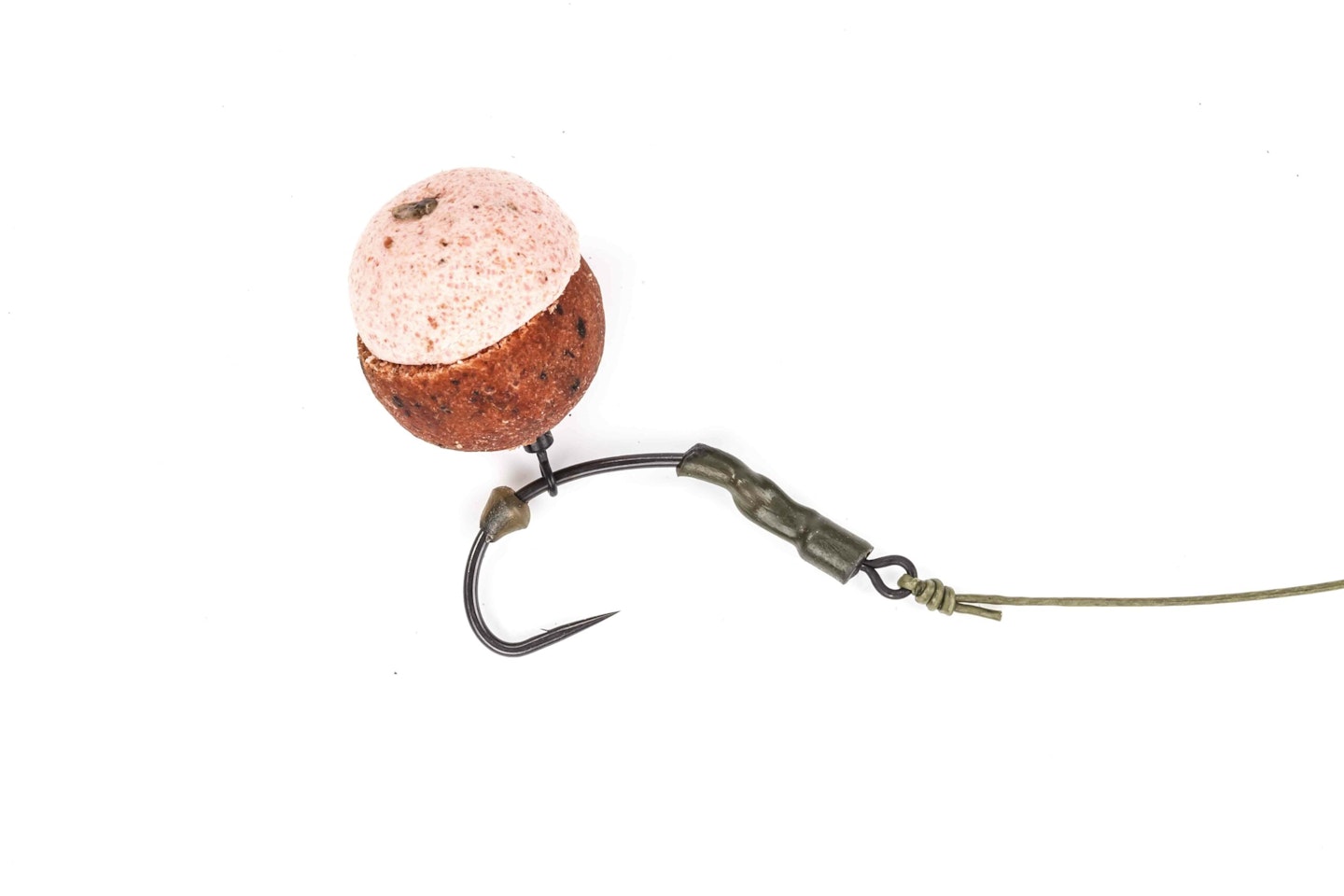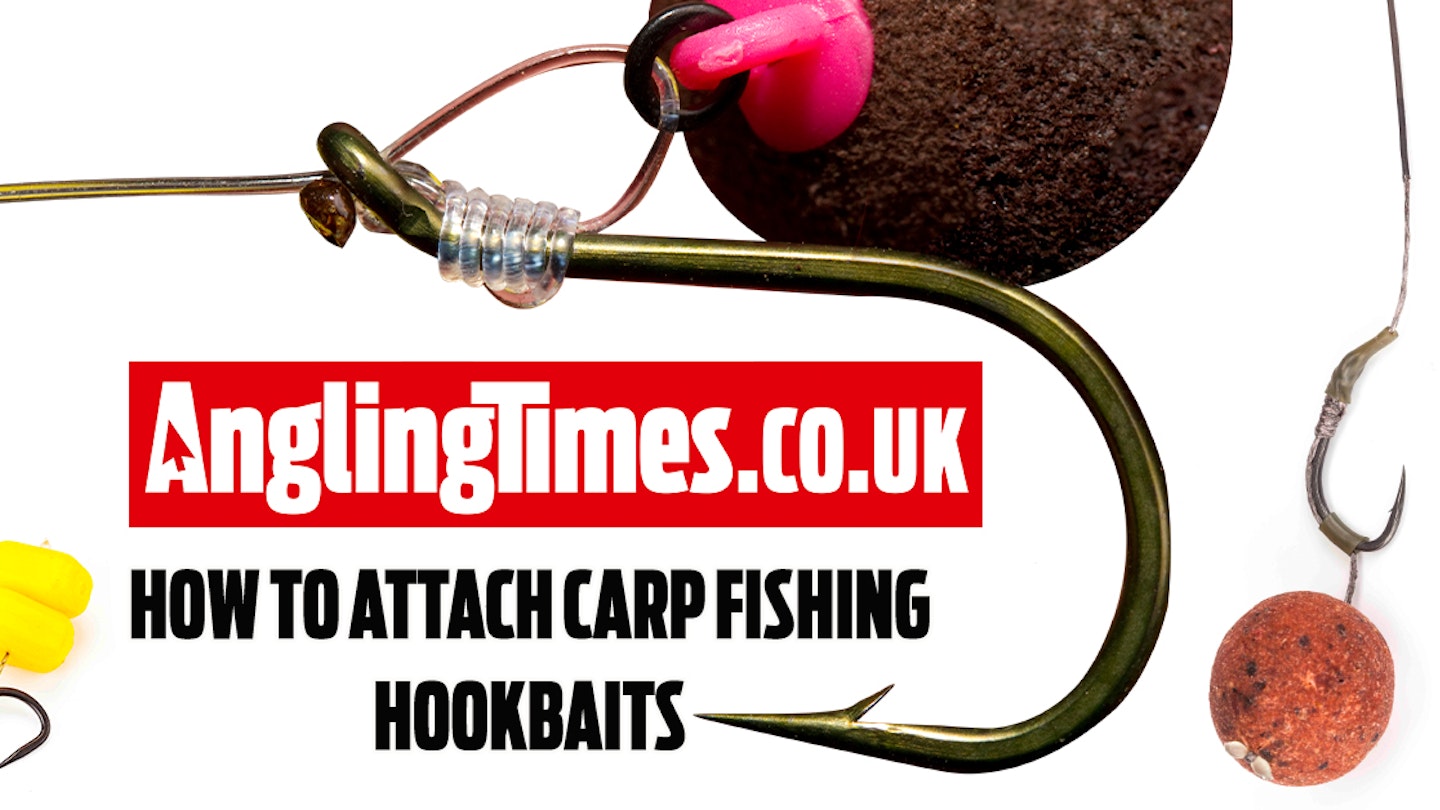FIFTY years ago it was simple. To present a bait to a carp, you just impaled it on the hook and cast out.
While this sort of presentation still occasionally has its place, most notably when stalking, freelining, or floatfishing for big carp in the margins, for most other situations there is a better alternative that will offer superior hooking mechanics.
Here, we take a look at some of the options available to you...
Standard Hair Rig
Some of the biggest carp in the land have fallen to the standard hair rig, invented in the early 1980s by Len Middleton and Kevin Maddocks. On really well-stocked waters, where the fish compete aggressively for bait, complicated rigs often aren’t required, and bait attached with a simple knotless knot will do the business. You can play around with the length of the hair to affect the rig’s mechanics. Sometimes you want the bait tight to the shank (as when fishing zig rigs), while on others a hair of up to 2cm or even 3cm will be better – such as when you are targeting really big fish.
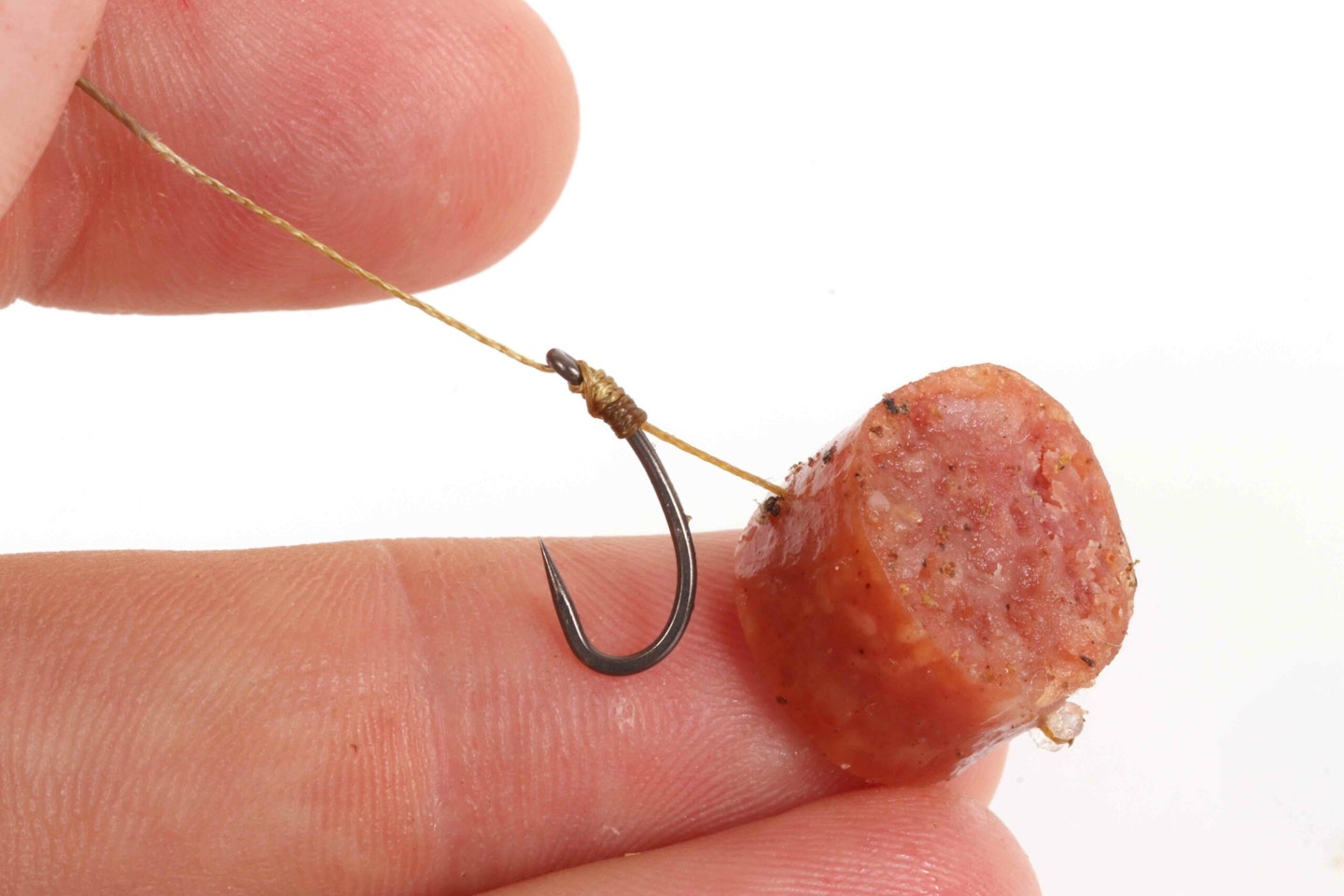
Bait Screws/Spikes
These are a quick way of attaching pop-ups, especially if you find tying them on with floss a fiddly process. You can buy just the plastic screws, as shown here, which simply clip inside the small rig ring on the ‘D’ section and can be twisted into the bait, or you can also buy metal versions that come complete with the mini rig ring already attached. The metal versions are best used with large baits, the plastic ones with smaller, more subtle offerings.
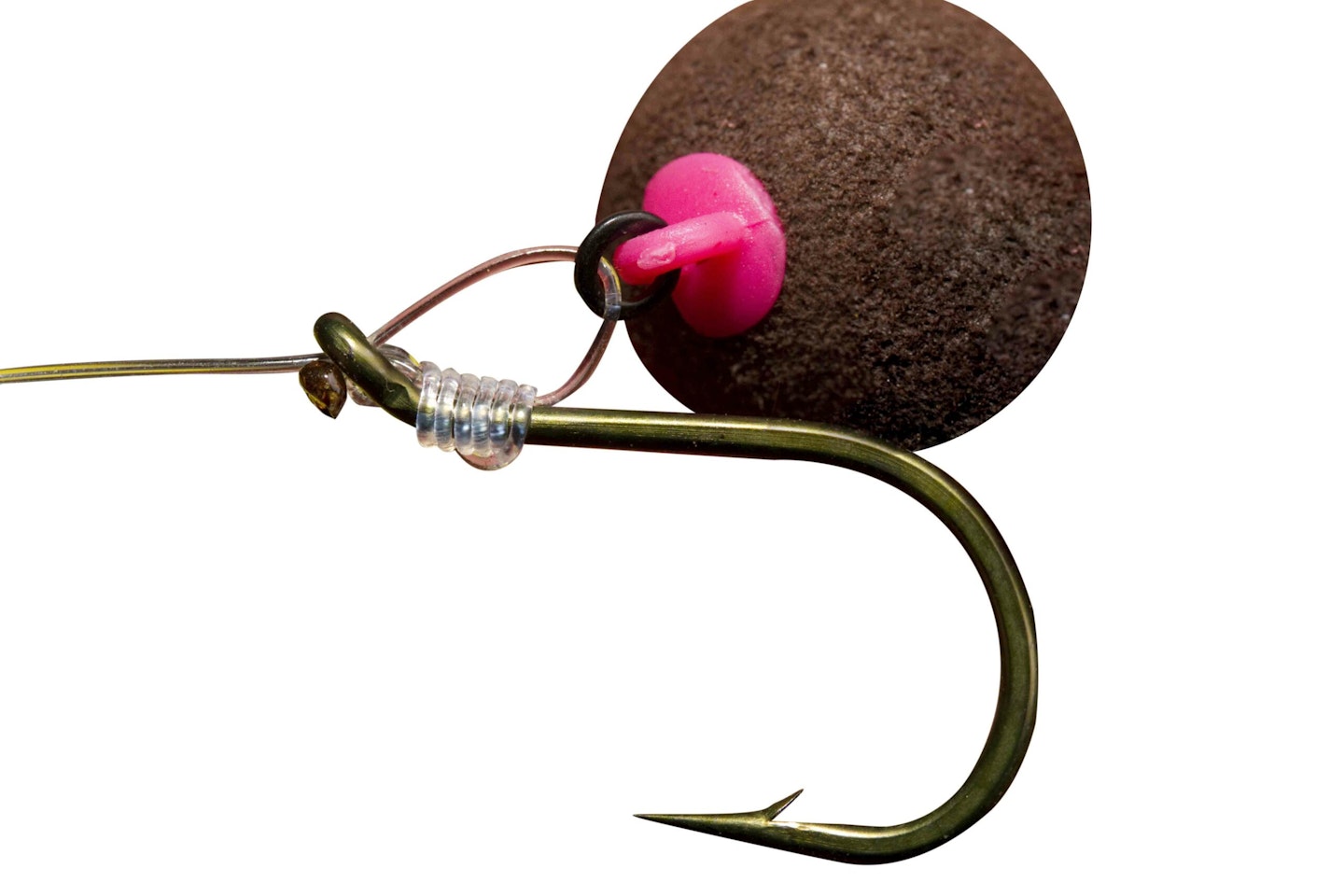
Blow-back rig with silicone
This is one of the most common methods of attaching a hookbait and, as well as helping to keep the hook shank and bait well aligned, the idea behind the small bit of silicone is that if you wind in and find it has blown back up the shank towards the eye, you know that you’ve been ‘done’! Depending on the length of the hair, it can be used with both bottom baits and pop-ups. For bottom baits use a longer hair to create separation between the hook and bait, whereas for pop-ups a shorter hair is required, with the bait virtually touching the bend.
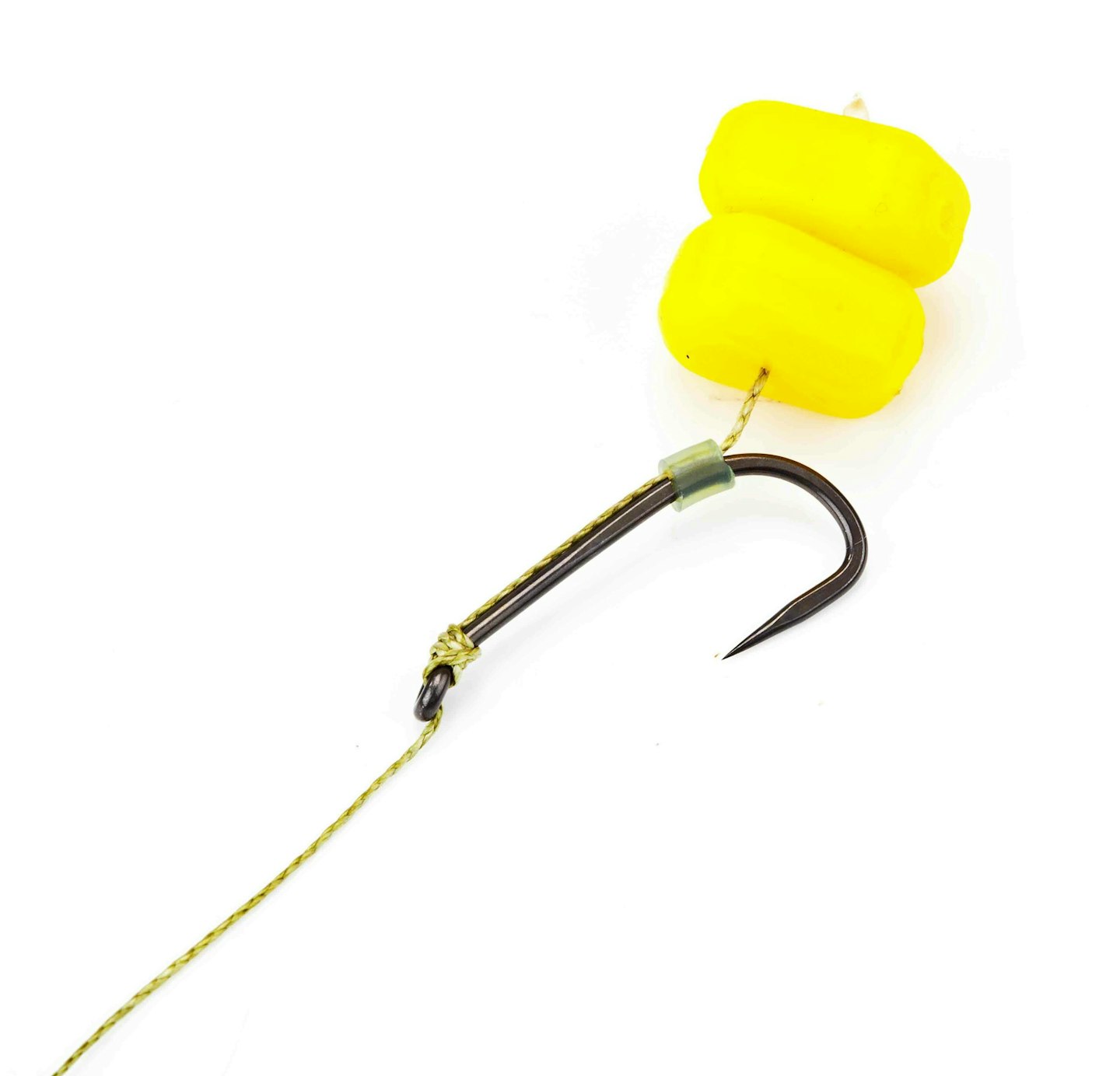
KD Rig
This may look similar to a standard hair rig, but there is one key difference. Unlike a normal rig, where the hair exits from the bottom of the knotless knot, on the KD it exits after a couple of turns, and the rest of the knotless knot is then whipped round the shank of the hook and underneath the hair. This ensures that the hook hangs in the optimum hooking position and is much harder for the carp to eject. While this rig can be used with bottom baits, it is at its most effective with wafters or critically-balanced baits.
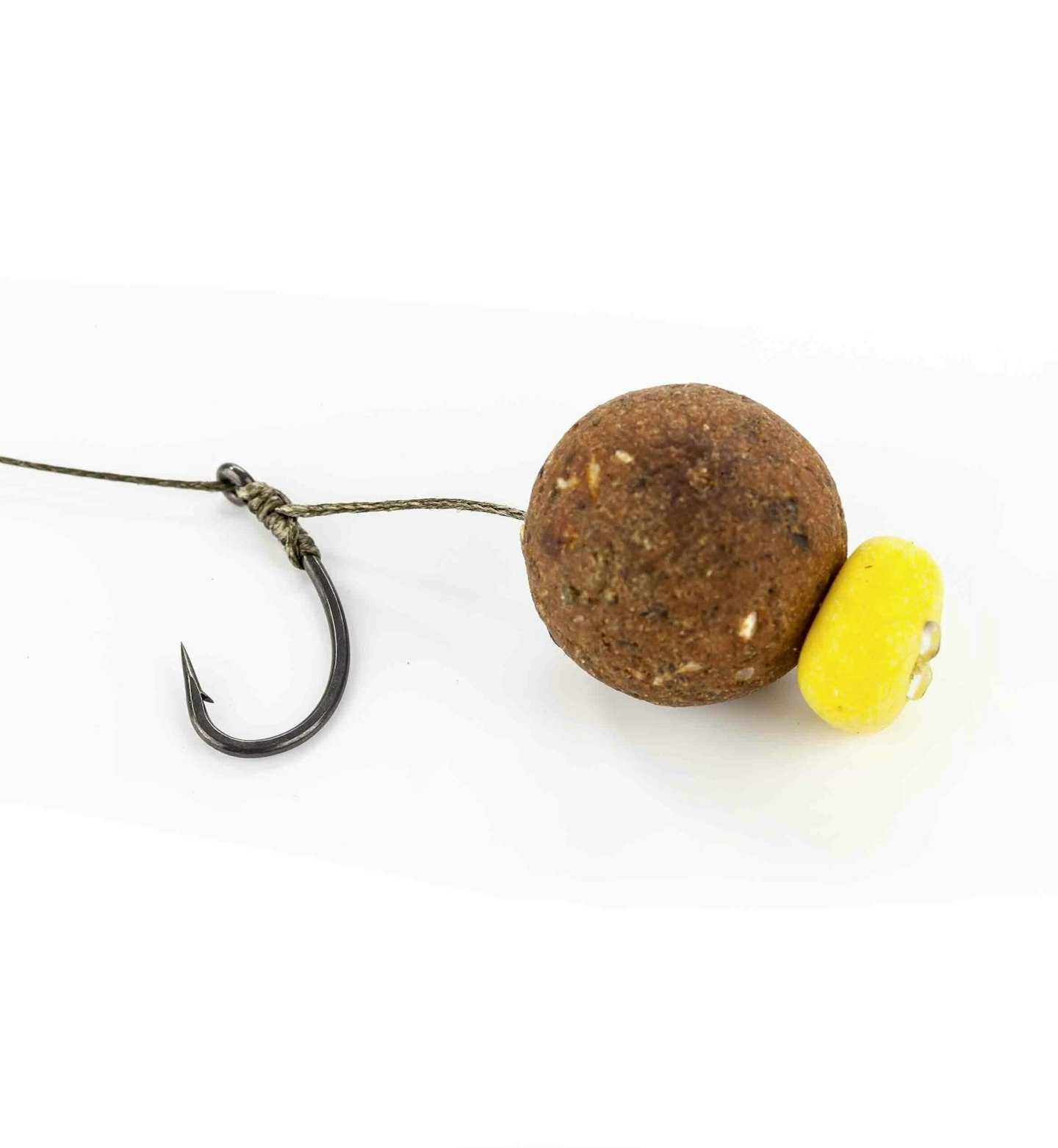
D-Rig
Mainly used on pop-up presentations such as stiff hinge rigs which incorporate stiff hooklink materials. The small ‘D’ houses a rig ring, or micro swivel, to which the bait is attached, and the hookbait is held close to the eye of the hook, leaving the latter hanging at an aggressive angle. It can also be used for bottom baits and wafters, and is great over clear areas among weed.
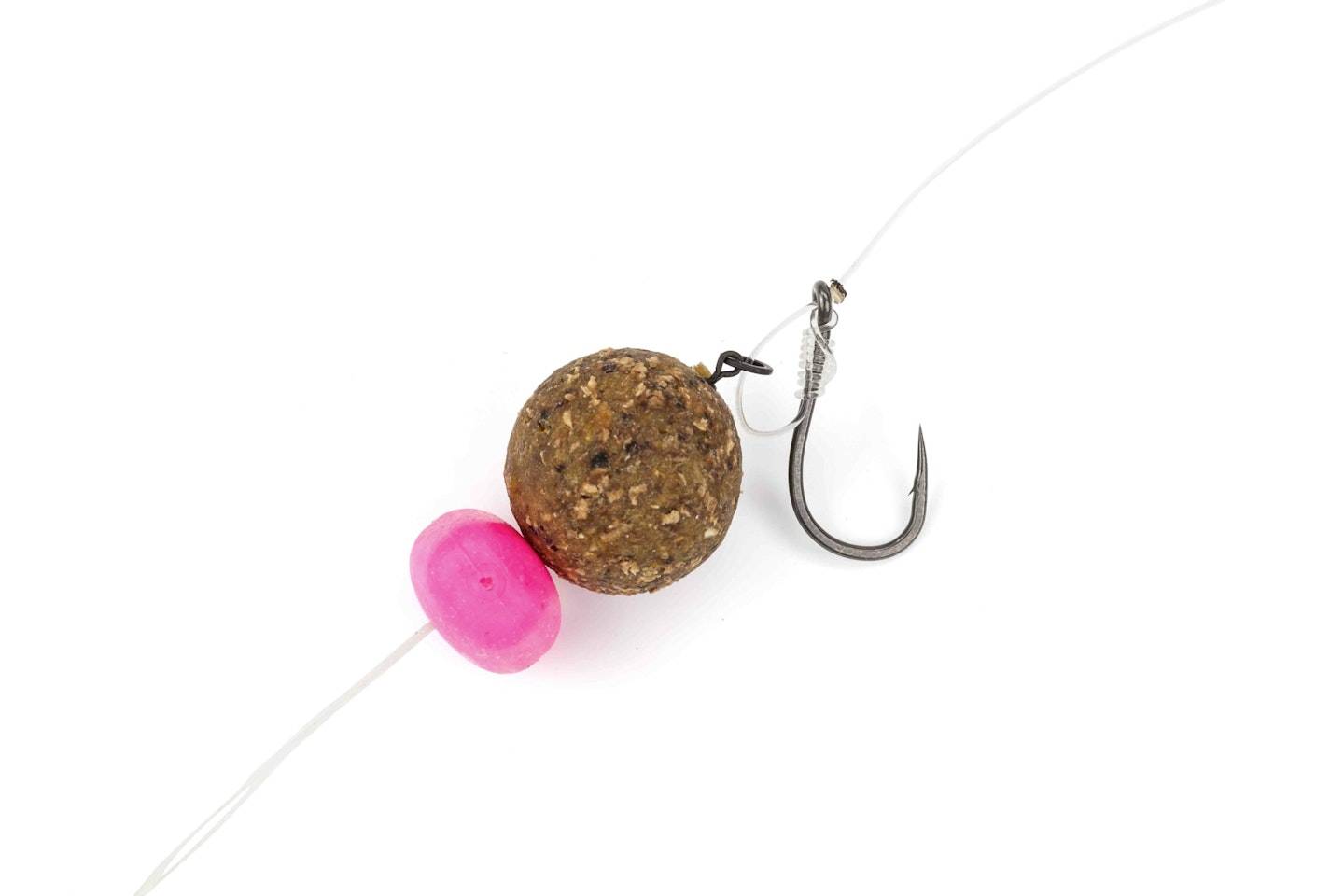
Heavy bottom bait
As the name suggests, this is a really effective way to attach large bottom baits such as boilies, maize or tiger nuts. The small sections of silicone – one around the bend of the hook, the other angled over the eye – are key, as when the bait is inhaled they cause the hook to flip over aggressively and grab the fish’s bottom lip. It’s a great, no-nonsense rig for big carp, and is normally used with coated braid hooklinks.

Blow-back rig + ring
A versatile and popular set-up that can be used with most hookbaits. With a rig ring instead of a piece of a silicone, if a carp picks up the rig and successfully ejects the hookbait, the ring can ‘reset’ itself in the correct position. The silicone, however, would be left blown up the shank of the hook, reducing the effectiveness of the rig. It works brilliantly with bottom baits and critically balanced ones alike.

Rig Swivel
This method has become really popular in recent years. It can be used with pop-up rigs (like the Ronnie), or wafter/bottom baits (the German rig), creating some separation between the hook and the hookbait because of the way the swivel can travel freely up and down the shank between the hook eye and rig bead.
